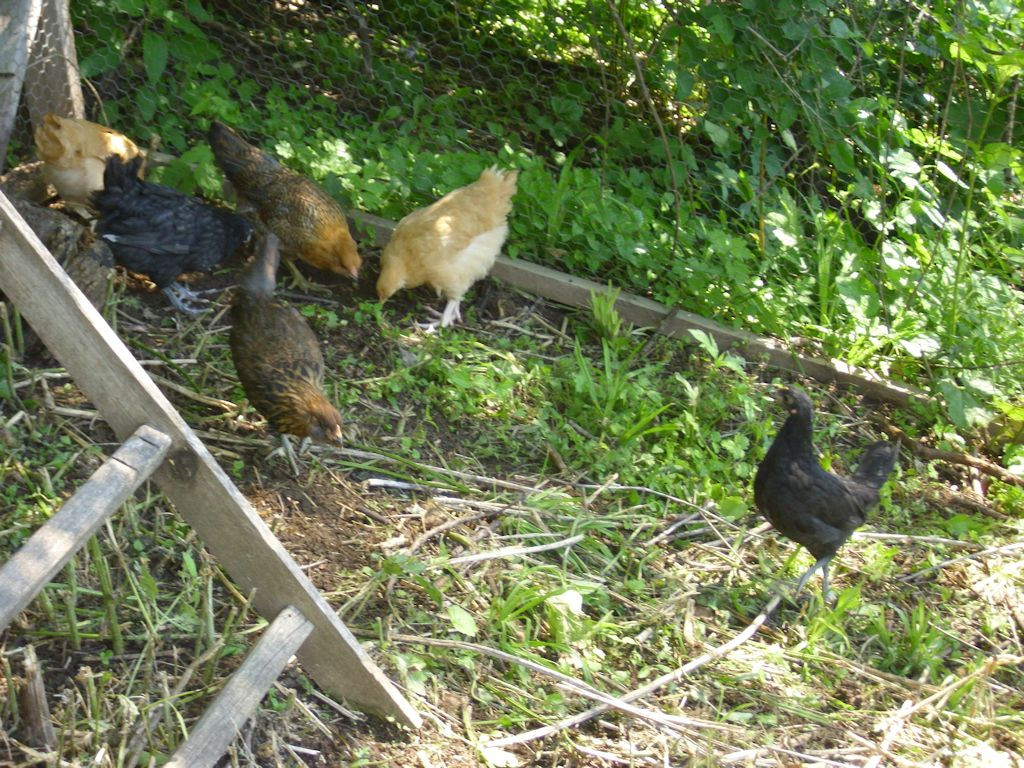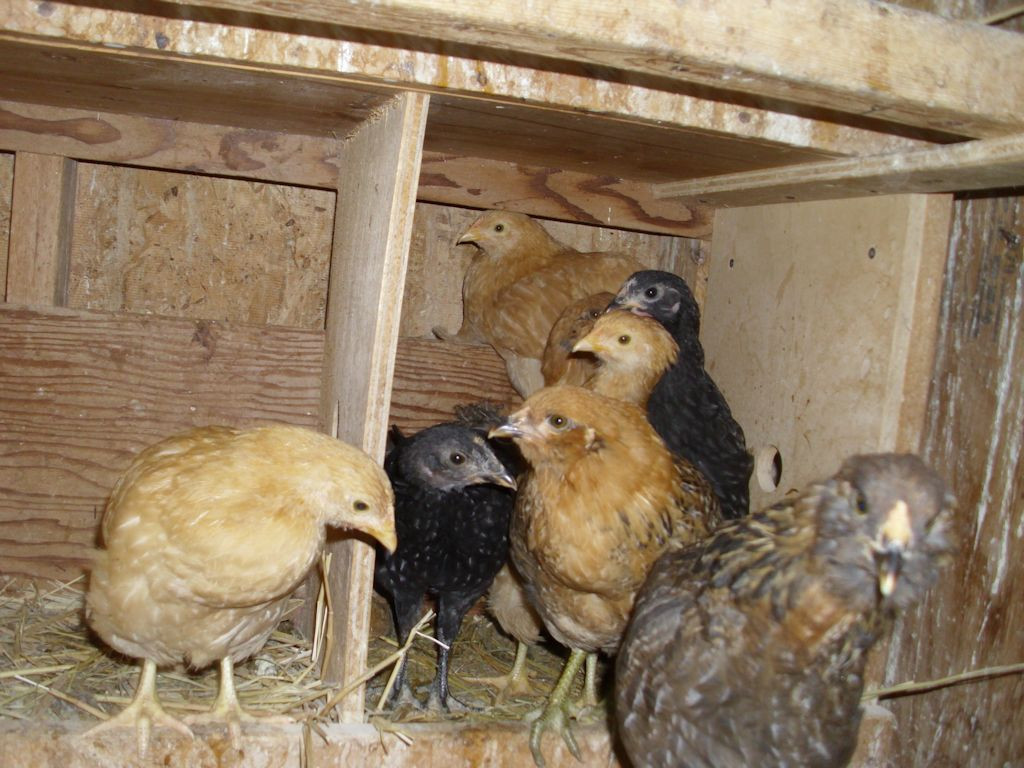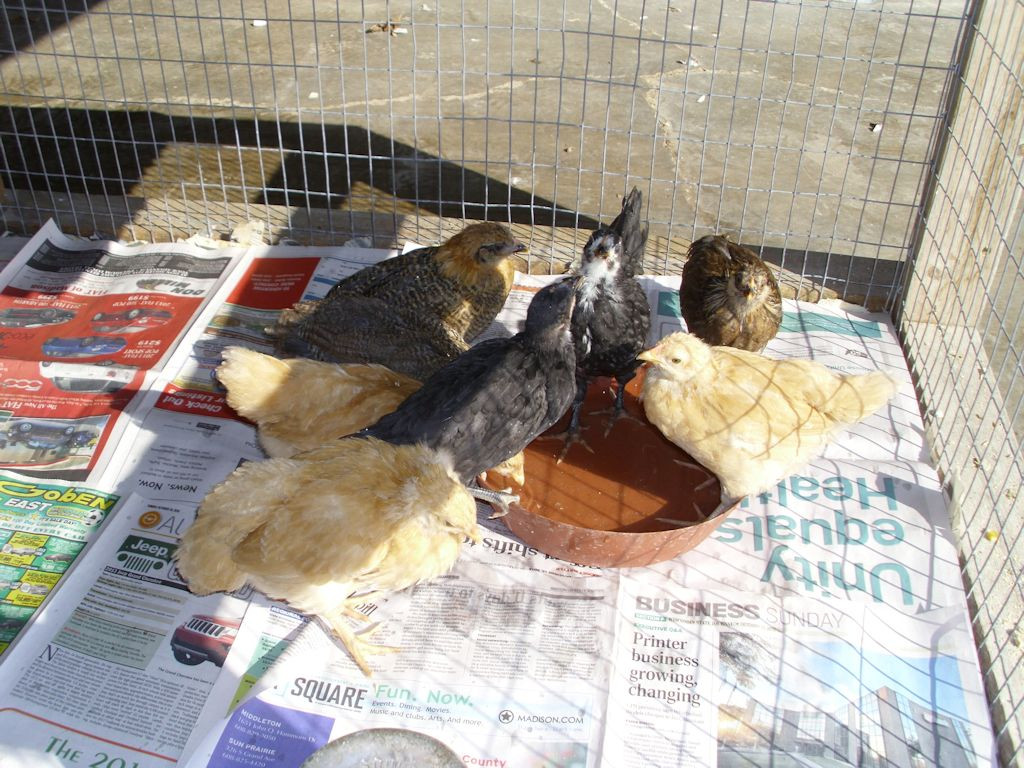A lot has happened with the chicks since last week’s A Chick Update (Part 7) report. Of course, they continue to grow. They’re also arguing a bit more, but that’s the way of siblings everywhere. Sometimes the arguments are quite funny though. One chick tried to get what it thought was a worm or another goodie from another chick, only to discover the goodie was just a piece of straw. She then blamed the other chick for misleading her (or that seems to have been the point of the second peck). I sometimes watch them for a while just to see what they’ll do next. It’s difficult, at times, to figure out what they’re doing. Of course, I’m sure they think the same thing of me.
This week was the first week the chicks were able to go out of the coop and into the run. Things went pretty much as I thought they would. At first the chicks hid in the corner furthest away from the door leading to the run, but they warmed up to the idea of being outside quite quickly. It wasn’t very long and they were outside running about, sometimes chasing each other from one end of the run to the other. Mostly they tried to emulate the hens though and pecked at the dirt appreciatively.

What I didn’t realize is that the chicks soon discovered one of the hen tunnels. Yes, I thought I was pretty smart filling in all those tunnels and waiting until it had rained a few times to ensure that the dirt would be packed down, but the chicks had an entirely different idea. It wasn’t long before they opened the tunnel enough to get out from the run. The hens were too large to fit, so they squawked as the chicks enjoyed their freedom. Only, the freedom wasn’t quite so welcome after a while and the chicks started to scream quite loudly. It seems they couldn’t figure out how to get back into the run.
Upon hearing all the turmoil, I decide to check things out. What I saw were the six hens, who should have been able to fly out of the run and enjoy a walk wherever they wanted, stuck inside the run because they had become too fat to fly that high. Outside the run were the chicks, running about madly, trying to find a way back into the run. Yes, it was the old story of the grass being greener on the other side of the fence with me stuck trying to figure out a workable solution.
I waited for the chicks to calm down. I knew that if I approached them at the time I discovered the breakout, they’d simply run in some other direction. Three of the chicks just let me pick them up when I carefully approached them. Not surprisingly, it was the Buff Orpingtons who made the gesture. I carefully opened the coop door and called to the remaining chicks. Two of the Americaunas just walked inside, looking quite pleased with themselves. This left three chicks outside.
At this point, I broke out the fishing net. I hope my neighbors weren’t watching (and if they were, they got a really good laugh). Imagine a guy running around chasing chicks in the high grass and woods with fishing net in hand trying to catch the chicks underneath. The ground is completely uneven, there are hidden holes, and the chicks have a tendency to disappear under leaves at the worst possible moment. It took fully an hour to catch the two Barred Plymouth Rocks (a most obstinate bird) and the remaining Americauna.
The next morning I spent additional time making sure the tunnel was quite sealed. This time the chicks stayed inside the run. I’ve been out there first thing every morning since looking for additional avenues of escape because the chicks certainly are trying hard to find one. Let me know your thoughts about all things chicken at [email protected].






